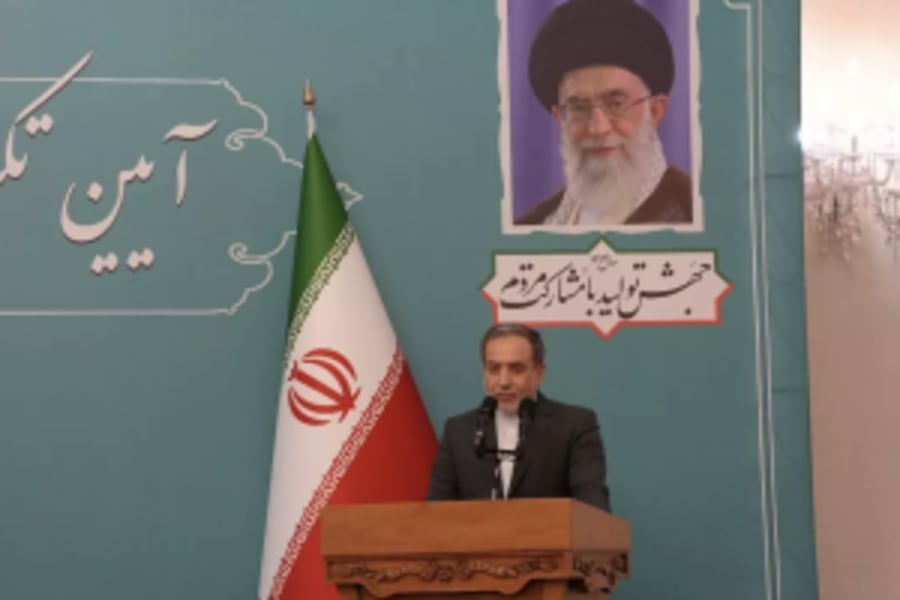Yom Kippur, the Day of Atonement – Understanding Judaism’s holiest day

With Yom Teruah celebrated one week ago, we are moving close to the end of the 'Ten Days of Awe,' during which religious Jews seek forgiveness for wrongs committed in the past year, ahead of the Yom Kippur, the Day of Atonement.
During this time, religious Jews believe that God has the Books of Fate open and is assessing each person, to decide whether to write their name into the Book of Life or the Book of Death. Those books are closed on Yom Kippur, according to tradition, so the Ten Days of Awe, also known as the Days of Repentance, are viewed as the last chance to make things right with God and people.
Yom Kippur is a solemn day, and in modern Judaism is the most important, and probably the most observed holiday on the Jewish calendar.
In Israel, where most communities have a synagogue within walking distance due to halakhic requirements, (Jewish religious law is referred to as Halakhah), the synagogue is at the center of Yom Kippur.
During Passover, the focus is on the seder, a communal meal usually celebrated with family to remember the miracle that God performed to 'let His people go' and be free from slavery in Egypt.
On Sukkot (the Feast of Tabernacles) the focus is the sukkah (booth) where the family hosts friends for festive meals, and where many Orthodox will sleep in fulfillment of the biblical command. During Hanukkah, the focus is on the candles, fried foods and the songs.
But Yom Kippur is different. Because it is a day of fasting and seeking repentance both individually and communally, there are no celebratory meals. Because of the command to “afflict one’s soul," there are no joyful songs.
In Israel, where even the secular Jews generally observe the day, the country comes to a sudden, quiet halt. The streets are empty of cars, the synagogues are full of people.
Jewish men, many of whom never wear religious articles such as the kippah (head covering), or tzitzit (tassels on the corners of the garment), tefillin (phylacteries), or tallit (prayer shawl), can be found in large, wearing flowing prayer shawls almost the whole day.
Synagogues that may commonly struggle to attract a minyan (a group of at least 10 Jewish men gathering for recitation of prayers) are suddenly full of people and finding an empty seat is a challenge.
Almost the entire nation comes to the realization each individual has a personal need to make a personal accounting for his or her actions, what the Israelis call heshbon nefesh (account of the soul).
The day is mostly known to non-Jews for its 25-hour fast, which starts at sunset on the evening before and lasts until the next sunset. Religious Jews undertake a complete fast, abstaining from food or drink.
Most people will wear white clothes to symbolize the aspiration to be purified ethically and morally. Some Jewish men even wear a white robe called a kittel, which are used for burying the dead.
In the synagogue, the very formal and often intricate services start with the Kol Nidrei (All Vows), a prayer to cancel all careless vows, or vows made under duress from the previous year.
In addition to the three daily prayers on Yom Kippur, a special memorial prayer called the Yizkor, is recited in memory of those who have died over the past year. A special service, called the Avodah (worship), is performed to re-enact the high priestly ritual for Yom Kippur in the Temple.
Throughout the day of Yom Kippur, there is the communal confession of sins in a prayer called the Viddui (or the deathbed confession). The day in the synagogue closes with a service called Neilah (literally – locking), which imagines the doors of heaven being locked at the end of the Ten Days of Awe. The shofar, or ram's horn is blown at the end of the service, which also opened the Days of Awe. The sound of the shofar signifies that God’s decision has been made. The books are closed until the next year.
The modern celebration of Yom Kippur for religious Jews is quite different than the biblical instructions for the day because of the lack of a physical temple. The early rabbis wrestled with the concept of atonement without a sacrifice before deciding that the daily prayers would replace the function and significance of the sacrifices.
While some groups of Orthodox Jews continue to perform a ceremony involving the ritual killing of a chicken on Yom Kippur, the practice is less widespread now in Israel.
In the biblical instructions, the priests, particularly the high priest, performed all the necessary rituals commanded by God for the nation to be forgiven for its sins. By contrast, in modern Judaism each person undertakes the responsibility of confessing their sins and performing the prayers and services on Yom Kippur.
As we consider this day, which the scriptures proclaim as a solemn day, we are reminded that the necessary work has already been accomplished by our true High Priest, Jesus our Messiah.
"But when Messiah appeared as a High Priest of the good things that have come, then through the greater and more perfect tent (not made with hands, that is, not of this creation) he entered once for all into the holy places, not by means of the blood of goats and calves but by means of his own blood, thus securing an eternal redemption. For if the blood of goats and bulls, and the sprinkling of defiled persons with the ashes of a heifer, sanctify for the purification of the flesh, 14 how much more will the blood of Messiah, who through the eternal Spirit offered himself without blemish to God, purify our conscience from dead works to serve the living God." Hebrews 9:11-14

J. Micah Hancock is a current Master’s student at the Hebrew University, pursuing a degree in Jewish History. Previously, he studied Biblical studies and journalism in his B.A. in the United States. He joined All Israel News as a reporter in 2022, and currently lives near Jerusalem with his wife and children.













